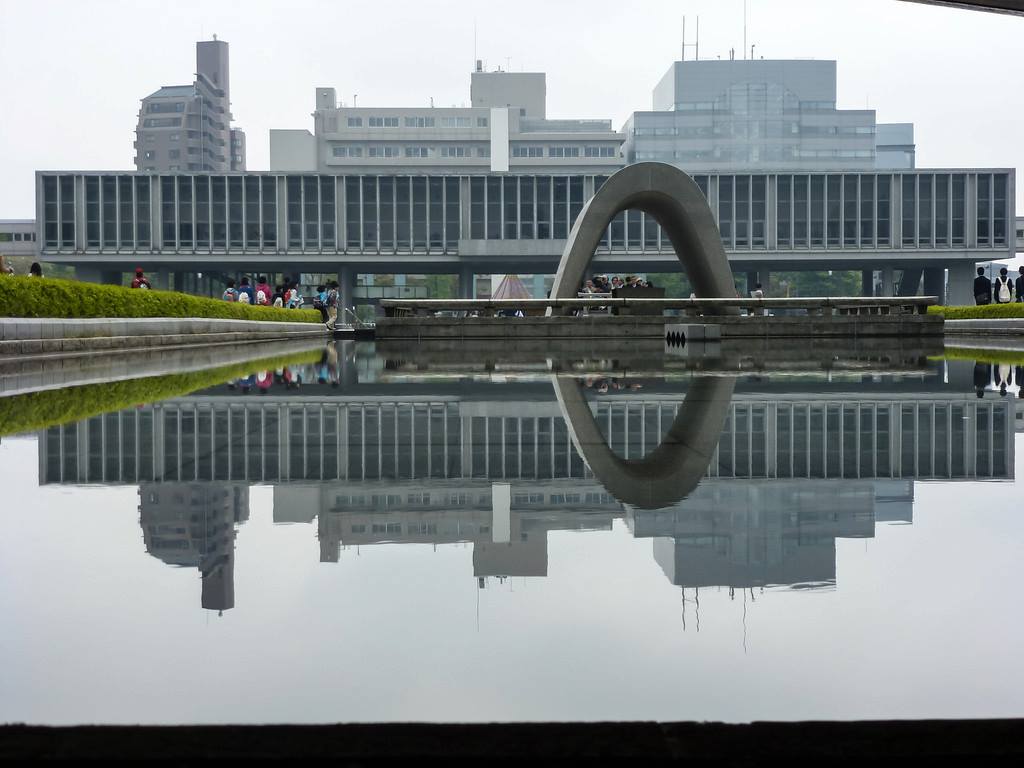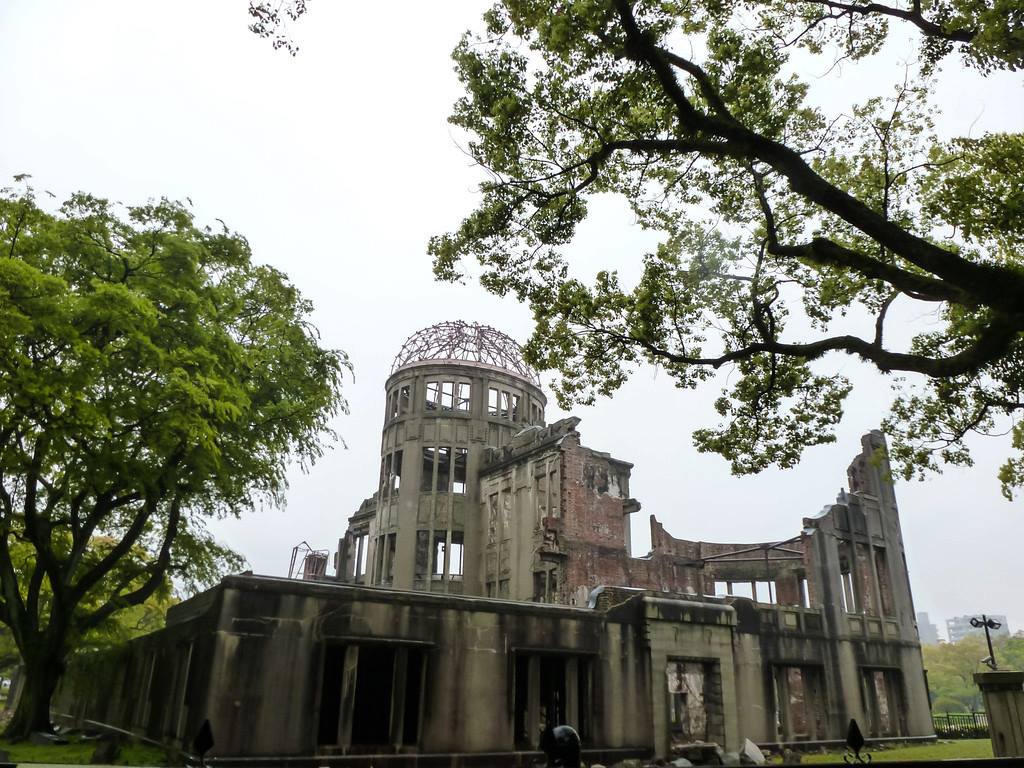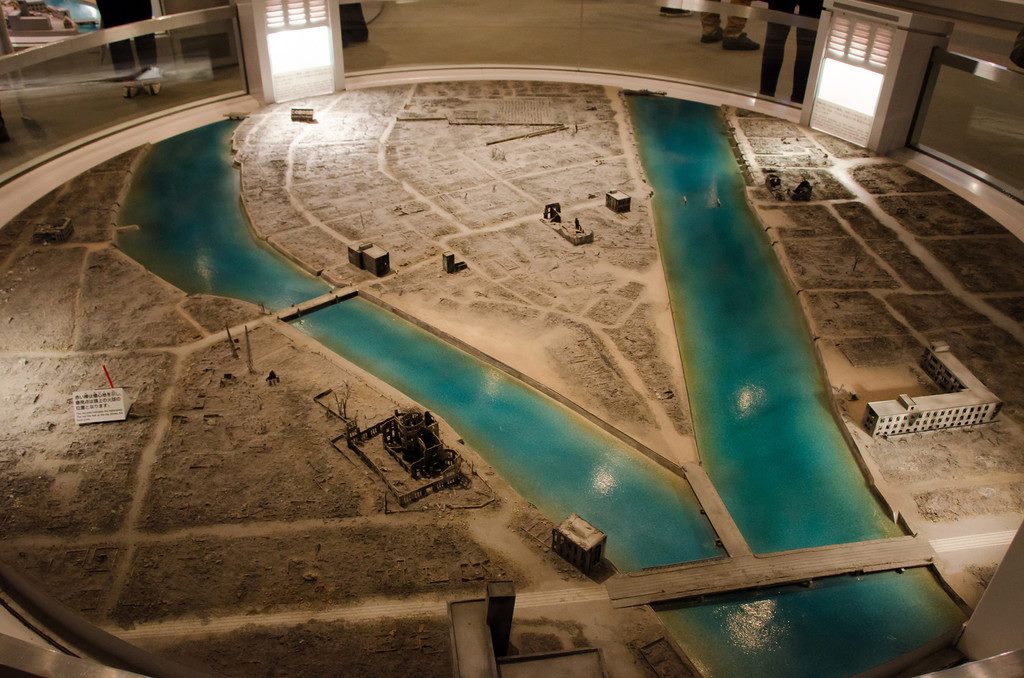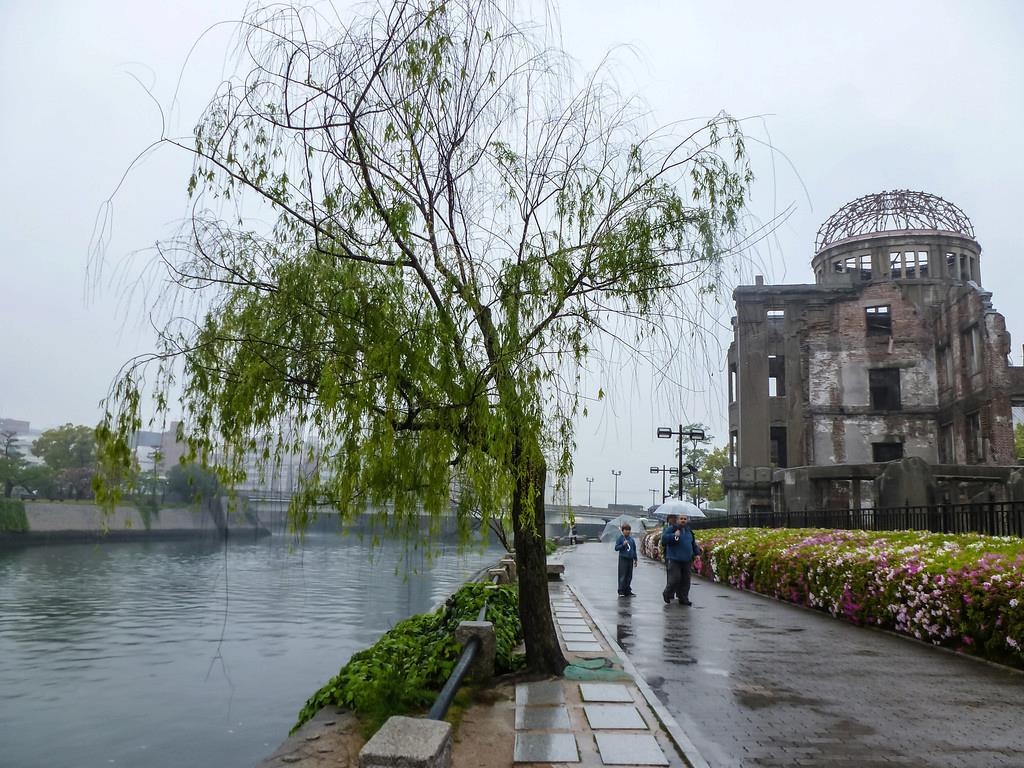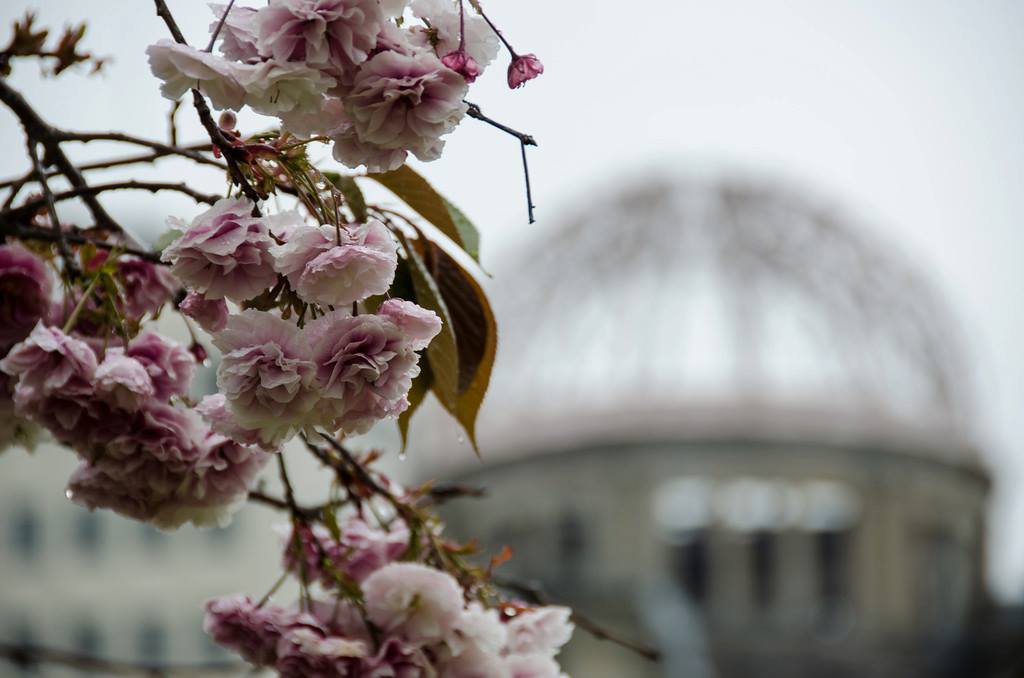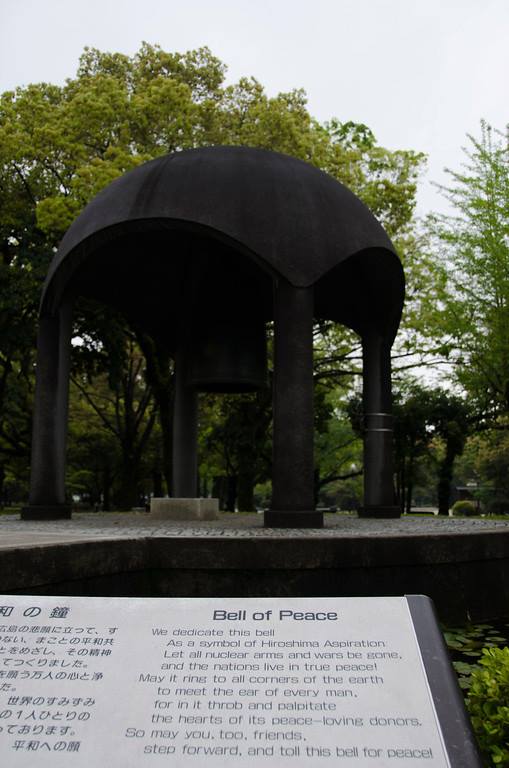In light of my new self-challenge to let go of my need for perfectionism in writing I decided to tackle a post that has been dodging me since I first contemplated how to put it into words.
Adam and I visited the city of Hiroshima while in Japan with our main goals being to see the Peace Park and the Museum.
I felt a strange pull to visit this city, in much of the same way that I felt a pull to visit other depressing historical sites – Dachau, cemeteries…I’m not sure where this desire comes from. A need to bear witness to lives lost. A need to see. A need to feel.
This site had a different twist. One that made me uncomfortable and slightly ashamed.
After all, the United States is responsible for the reason this city – Hiroshima – has a Peace Park. A bombed out building. A museum dedicated to the horrors of nuclear war.
Politics aside – because oh boy could this post take a sharp turn into the abyss that is political debate on nuclear power, war, etc. – the pull to see this place was met with a tender recognition that while my country was responsible for the destruction, mending and healing was also possible.
Perhaps that recognition was my way of ensuring I felt better about it all. Point is the amazing and complicated mixture of feelings I had that day was huge. A literal heaviness that sat with me all day as I bore witness to the reality of my nation’s violent past. It’s not often that I am in that position – to see the other side of “our greatness”. Often in history classes the facts are presented as just that: facts. Cold. Unfeeling. X. Y. Z. Check. Check. Check.
And once again I am reminded of what makes me believe so wholeheartedly in the necessity of travel. To bring these stories to life. To personify what the “A-bomb” really was. To hear the demand ‘never again’ in a very different way.
Other WWII sites always struck a righteous chord with me. A sense of duty to ensure all human rights are taken seriously and no one had to relive the horrors so many ethnic groups, but particularly the Jewish people, had to endure. It was a feeling that I believed education and continued exposure could, in many ways, help prevent those atrocities from occuring.
This?
This is something different. The museum sparked in me an almost hopeless sense of foreboding. Instead of the demand “Never Again” it was a plea. A plea to disarm nuclear warheads. A plea to the masses to understand how horrifically awesome nuclear power is. And over 900 literal pleas from the mayors of Hiroshima in the form of letters to every single country leader who has tested a nuclear missile – every time it occurs.
It was hard to read the many letters that have appeared on the doorstep of our White House.
While I’m certain there is a political message in this museum’s purpose it’s hard to fault anyone for that. Afterall Hiroshima is one of the few cities who have endured the very real consequences of a nuclear world. Aren’t they, if anyone, entitled to demand something different for our collective future?
We left the museum with somewhat heavy hearts. The day had been overcast and rainy which added to our somber moods.
And yet peace, heck, even happiness, can prevail. We were stopped, again, by a group of school aged children who wanted to ask us questions in English as part of their field trip. They were cute, happy, possibly naive school kids just engaging some white tourists in conversation for class. They wanted to have a picture made with us. And, with tons of thank yous, continued on their field trip and left us to ours.
So simple and yet it warmed my heart.
Newness and learning and willingness to be kind to others. Hope is still alive!
We were reminded by several signs along the walk along the Ota River through the Peace Park and in the Museum that after the bombing most were fearful that no tree would ever bloom again due to the utter destruction and then unknown aftereffects of a nuclear attack. Much to the joy and pride of Hiroshima the trees did indeed bloom again and thrive. The reminder that life can overcome and prevail was and is a nice symbol of hope.
As we left the peace park we noticed a huge bell. There is a plaque in tons of languages inviting visitors to ring the peace bell while holding a sense of peace and hope in their hearts.
Ringing the bell certainly doesn’t make immediate change. But it was heartening to see so many visitors bearing witness to some of the atrocities humans are capable of and yet still hold onto the hope for a better future.
I chose to leave that space thinking of how vast the human spirit is. How capable we are as a species of forgiveness. How resilient we can be.
All in all I would recommend visiting the Peace Museum and Park if you find yourself near Hiroshima. It is an incredibly powerful experience. Expect to cry – or at least have an enormous lump in your throat. Expect to be thoroughly horrified – especially when you read and see the physical toll taken on the bodies of the victims and survivors. Expect to be angered, saddened, skeptical, uncertain. It is most definitely an experience I will not soon forget.
Logistics (a fun new section I’m going to try to implement to make this blog slightly more helpful):
– We traveled to Hiroshima from Kyoto by JR line on a Hikari Shinkansen (slightly less speedy than their bullet speed trains…a foam bullet perhaps? Nerf gun speed?) — you MUST purchase your JR passes in advance before you land in Japan! Once you have your pass, and you land in Japan….eh, you know what? Just going to make a post all about how you get around in Japan via train. There. Stay tuned!
– Once in Hiroshima you purchase a day ticket on the tram (Hiroshima is one of the few cities in Japan that still operate by tram line). The kiosk is right outside the main train station next to the tram lines.
– The tram stop you want is named “Genbaku Dome-mae” though you will see the dome across the street from the stop so no worries if understanding the Japanese language alludes you!
– Walk around the Genbaku (A-bomb Dome). Cross either the famous (infamous?) T-bridge (the actual target of the bomb) or walk down a ways keeping the Genbaku to your left and the river on your right until you reach the next intersection and cross the river there. This will bring you up through the Peace Park to the reflecting pool, eternal flame, and Peace Museum.
– For goodness sake get a MAP! They are free! And now you can’t blame me entirely when my directions end up being backwards or something.
